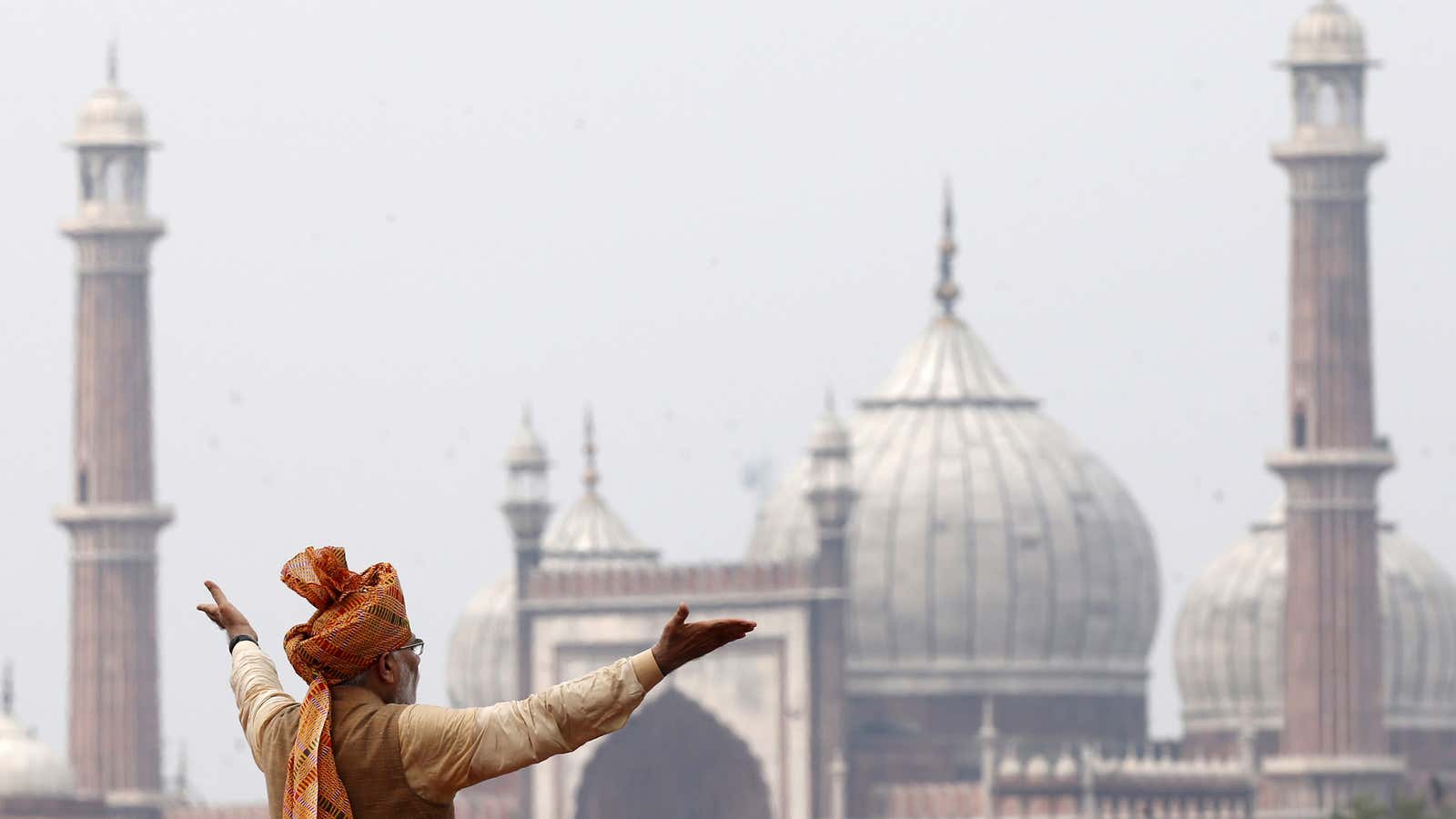As results of India’s marathon elections pour in, Narendra Modi’s Bharatiya Janata Party (BJP) seems to be leading in all the seven parliamentary constituencies of Delhi.
This is in keeping with the city-state’s tradition: It has unanimously chosen one national party across its constituencies in the past four parliamentary elections.
In 2014, all seven winning members were from the BJP; in the 2004 and 2009 polls, Delhi chose the Indian National Congress (INC). In 1999, it had gone again with the BJP.
Better mobility and connectivity across Delhi could be the reason that constituency lines are less significant here than elsewhere in the country. “A voter from Chandni Chowk is commuting daily for his job in South Delhi, and vice versa,” said Ankit Lal, social media in-charge for the Aam Aadmi Party (AAP). Essentially, one political mood dominates the city, he added.
The BJP’s victory may also be a sign of national narratives driving the election. In 2019, Modi’s campaign has towered over his opponents across the country.
“Elections this year took place in the presidential mode. It’s a complete Modi wave throughout India,” said Sunil Choudhary, professor of political science at the University of Delhi.
The Congress and the AAP could have put up a stronger fight in constituencies like East Delhi and Northeast Delhi had they formed an alliance, he said.
Recently, Delhi chief minister and AAP president, Arvind Kejriwal, also said that Muslims, alienated from the BJP’s Hindu nationalism, have cut his party’s vote share by voting for the Congress, which is now in the second place in most constituencies. The AAP trails both its rivals.
